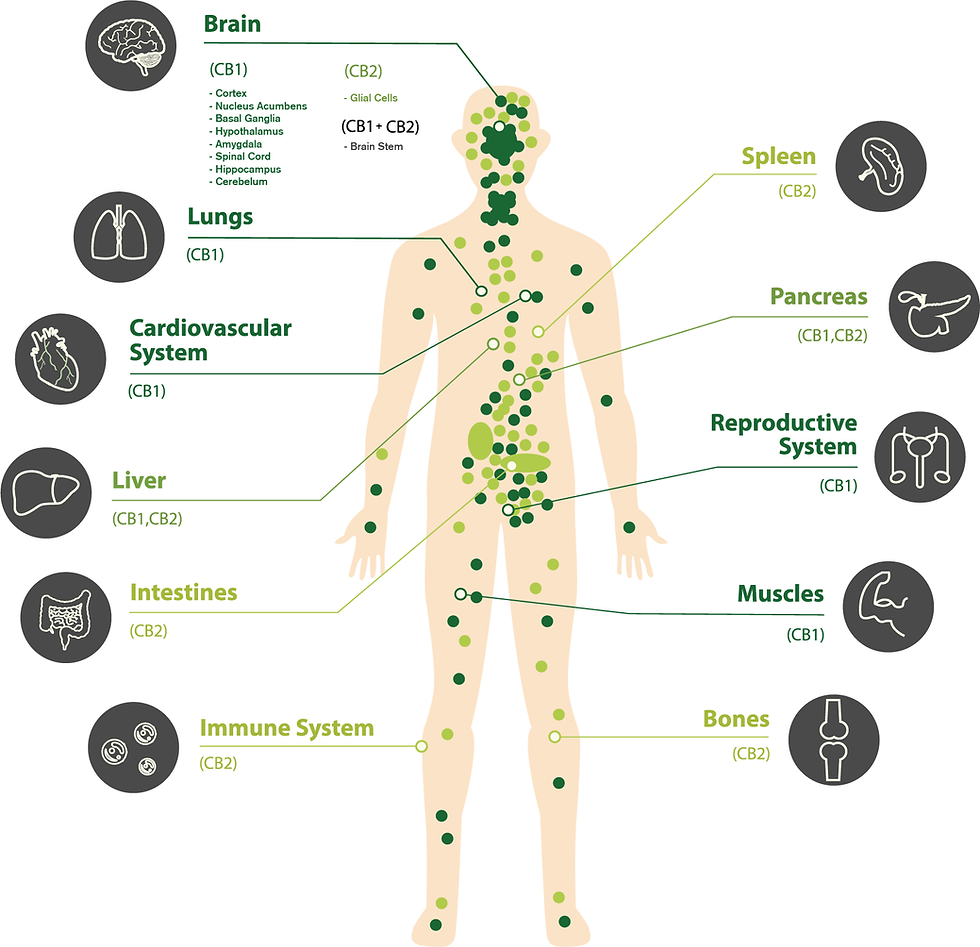


Cannabis Education
ENDOCANNABINOID
SYSTEM
Exclusively on APRC
Endocannabinoid System

Is a system...
that resides inside all mammals which helps regulate physiological and cognitive processes in order to maintain homeostasis, or in other words, to remain in balance.
Two Endocannabinoids
The two most prolific and well-researched naturally occurring endogenous compounds are termed anandamide (AEA or N-arachidonoyl-ethanolamine), also known as the “bliss” molecule, and 2-AG (2-arachidonoylglycerol). They are specifically derived from arachidonic acid.
The Relevance of This System
It is important to understand this system as it can potentially help us to understand how to maintain balance and how to remain in optimal health. Using cannabis products is just one tool for this goal. Cannabis products contain phytochemicals other than cannabinoids, like terpenes and flavonoids, which can help a deficient or hyperactive ECS.

What is the Endocannabinoid System?
This text describes the Endocannabinoid explainer video that would be published here when it is ready.

Blog Posts
01
The EndoCannabinoid System
The endocannabinoid system (ECS) is an innate system that resides inside all mammals which helps regulate physiological and cognitive proces
01
Cannabinoids vs. Cannabimimetic Compounds
Cannabinoids are compounds found primarily in the cannabis plant that are able to affect components of the endocannabinoid system




Cannabinoid Receptors
The two main cannabinoid receptors are called “Cannabinoid Type 1” and “Cannabinoid type 2” receptors (CB1 & CB2). Both can be found in the same location within the body such as the neurological system but at varying concentrations.

CB1
Are found primarily in the brain, specifically in regions like the hippocampus and cerebellum, but is also present throughout the body.
CB1 receptors are not found in the brain stem, which is why cannabis cannot suppress the vital respiratory functions the way other substances such as opioids can. This receptor is involved with many physiological functions like pain, appetite, and cognition.
CB2
Are found in parts of the brain and peripheral tissues like the cardiovascular system, liver, fat tissue, and bone. It is especially present in the immune system. It plays a significant role in influencing immune function by regulating immune cell migration as well as cytokine production, which are the chemical messengers of the immune system that regulate the immune response. This receptor plays a role in pain perception as well.



